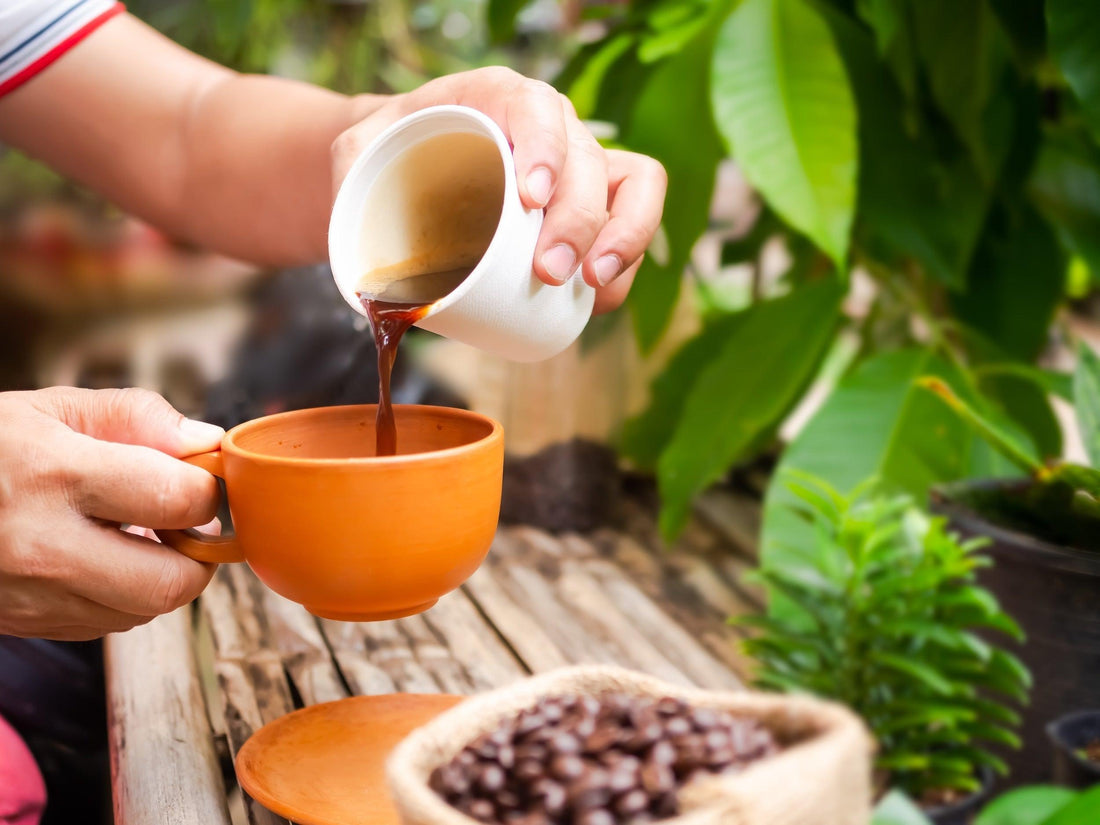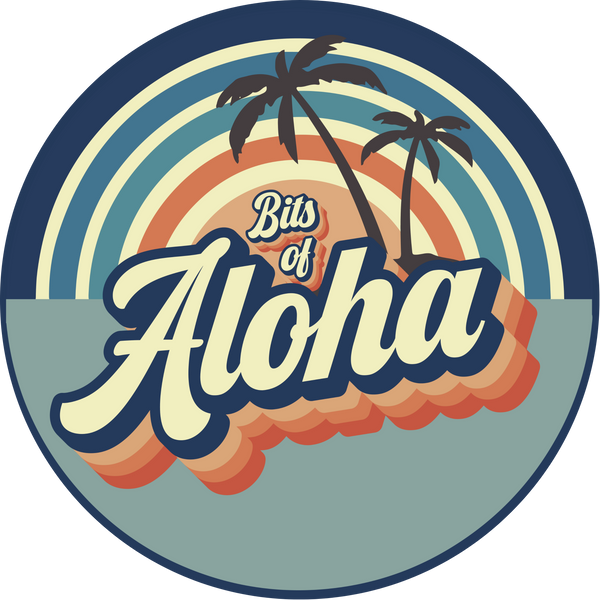
What Makes Kona Coffee So Special in Hawaiʻi
Share
Kona Coffee Continued! What Makes It So Special—and How It Compares to Other Hawaiian Coffees
There are few things as synonymous with Hawaiʻi’s upcountry lifestyle as a cup of freshly brewed Kona coffee. With its velvety body, low acidity, and rich, chocolaty undertones, Kona coffee has earned a coveted place on the global stage — commanding premium prices and deep loyalty among coffee aficionados.
But what exactly sets Kona coffee apart from other beans grown in Hawaiʻi? And what qualifies a coffee as truly Kona?
Let’s explore the origins, distinct characteristics, and regulatory protections of Kona coffee — and compare it to other notable Hawaiian-grown coffees, including those from Kauaʻi, Maui, and Molokaʻi — to help you sip more knowledgeably on your next visit to the islands.
What Is Considered “Kona Coffee”?
To be legally labeled Kona coffee, the beans must be grown in the Kona Coffee Belt, a narrow stretch of land located on the western slopes of Mauna Loa and Hualālai volcanoes on Hawaiʻi Island.
This belt is roughly 20 miles long and 1–2 miles wide, sitting between 500 and 3,000 feet elevation. The region includes the towns of Holualoa, Kealakekua, Captain Cook, and Hōlualoa.
Kona’s distinct microclimate — with morning sun, afternoon clouds, rich volcanic soil, and consistent rainfall — creates ideal growing conditions for Arabica Typica beans, the traditional strain used in Kona production.
For a coffee to be labeled 100% Kona, it must contain only beans from this region. Anything less is considered a Kona blend, which legally can include as little as 10% Kona beans, with the rest typically coming from Latin America or Southeast Asia.
Why Is Kona Coffee So Special?
Kona coffee’s premium status isn’t marketing hype — it’s earned by centuries of tradition, hands-on farming, and naturally perfect growing conditions.
Here’s why it stands out:
![]() Volcanic Soil: Rich in minerals and well-draining, Kona’s soil contributes to the bean’s full-bodied and smooth character.
Volcanic Soil: Rich in minerals and well-draining, Kona’s soil contributes to the bean’s full-bodied and smooth character.
![]() Unique Climate: The regular rhythm of sunny mornings and cloudy afternoons ensures beans ripen slowly and evenly — developing nuanced flavors.
Unique Climate: The regular rhythm of sunny mornings and cloudy afternoons ensures beans ripen slowly and evenly — developing nuanced flavors.
![]() Hand-Picked Harvesting: Unlike mechanical harvesting in flatter areas, Kona’s steep terrain requires beans to be hand-picked, selecting only fully ripe cherries.
Hand-Picked Harvesting: Unlike mechanical harvesting in flatter areas, Kona’s steep terrain requires beans to be hand-picked, selecting only fully ripe cherries.
![]() Small-Batch Farming: Most Kona farms are family-owned, working under 5 acres, which allows careful processing and close quality control.
Small-Batch Farming: Most Kona farms are family-owned, working under 5 acres, which allows careful processing and close quality control.
![]() Strict Grading System: Hawaiʻi’s Department of Agriculture oversees a grading scale for Kona beans based on size, moisture, and defects — helping maintain consistent standards.
Strict Grading System: Hawaiʻi’s Department of Agriculture oversees a grading scale for Kona beans based on size, moisture, and defects — helping maintain consistent standards.
![]() Flavor Profile: Kona coffee is known for its silky texture, medium body, and balanced sweetness with hints of caramel, nut, and chocolate — making it one of the smoothest specialty coffees in the world.
Flavor Profile: Kona coffee is known for its silky texture, medium body, and balanced sweetness with hints of caramel, nut, and chocolate — making it one of the smoothest specialty coffees in the world.
Kona Coffee vs. Other Hawaiian Coffees
Though Kona is the most recognized Hawaiian coffee, the state boasts a variety of exceptional growing regions across its islands. Each region has its own terroir, flavor profile, and farming approach. Here's how they compare:
Kauaʻi Coffee
Grown on Kauaʻi’s south shore near Kōloa![]() kauaicoffee.com
kauaicoffee.com
Kauaʻi Coffee is the largest coffee plantation in the U.S., with over 3,000 acres in production. Unlike Kona’s hand-picked beans, Kauaʻi’s flatter land allows for mechanical harvesting.
Flavor Profile: Milder and less acidic than Kona. Often described as smooth and nutty with earthy undertones.
Why It’s Unique: Large-scale sustainable farming using drip irrigation and solar power. Excellent for travelers who want to explore Hawaiian coffee beyond the Big Island.
Maui Coffee
Grown in Upcountry Maui, especially in Kula and Kaʻanapali![]() mauicoffee.com
mauicoffee.com
Maui’s coffee industry includes boutique farms and the notable Kaʻanapali Estate, a former sugar plantation now converted to coffee.
Flavor Profile: Often brighter, fruitier, and more floral than Kona. Great for pour-over or lighter roast lovers.
Why It’s Unique: Elevation and diverse microclimates in Upcountry Maui create dynamic, complex cups.
Molokaʻi Coffee
Molokaʻi’s central Hoʻolehua region![]() coffeetimes.com/molokai.htm
coffeetimes.com/molokai.htm
Molokaʻi produces limited amounts of specialty coffee. Grown by the Molokaʻi Coffee Company, it carries its own certification label.
Flavor Profile: Often described as bold, rich, and slightly spicy — closer to Kona’s profile but more robust.
Why It’s Unique: The entire coffee operation is traceable to a single estate, making it a true "estate coffee."
Watch Out for Kona Coffee Blends
One major point of confusion for consumers is the presence of Kona blends — coffees that may contain as little as 10% Kona beans.
While these are more affordable, they don’t offer the same quality, consistency, or unique flavor as 100% Kona coffee.
In 2022, new legislation was introduced to strengthen labeling rules and require greater transparency about origin — part of a broader push to protect the value and integrity of Hawaiʻi-grown products.
Tip: Always look for labels that say "100% Kona Coffee" and buy from reputable sources or directly from farms.
Best Ways to Enjoy Kona Coffee
- Drip Brew or French Press — Highlights its smoothness and balanc
- Cold Brew — Brings out subtle chocolate and nut flavors
- Espresso — Kona’s low acidity makes it a fantastic single-origin shot
- With Dessert — Pairs beautifully with haupia pie, chocolate, or malasadas
If visiting Hawaiʻi Island, don’t miss a chance to tour a Kona coffee farm — where you can walk the orchards, sample freshly roasted beans, and learn the full bean-to-cup story.
Trusted Kona Coffee Brands
These farms offer online ordering, coffee subscriptions, and even international shipping.
Final Thoughts
Kona coffee represents more than just a drink — it’s a deep-rooted agricultural tradition, a symbol of Hawaiian excellence, and a sensory journey shaped by volcanic earth and island climate.
Whether you’re tasting it fresh on the slopes of Mauna Loa or ordering beans for home brewing, understanding what makes Kona coffee special enhances the entire experience.
And if you’re exploring other Hawaiian coffees, know that each growing region — from Kauaʻi to Molokaʻi — offers its own story in every cup.
Ready to sip your way through the Hawaiian Islands? I’d be happy to help you map out a farm tour, tasting guide, or the best beans to bring home.
